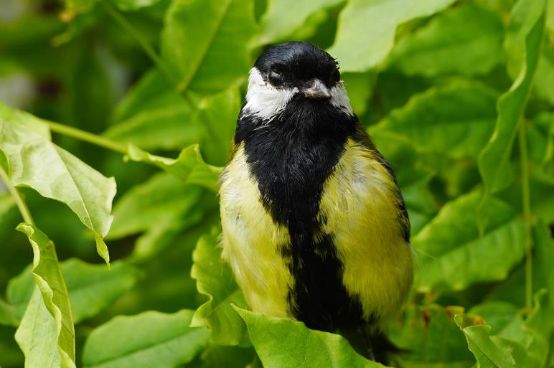Good singers wear big ties
Bach, Beethoven and Messiaen were inspired by birdsong. Heinz Richner from the Institute of Ecology and Evolution at the University of Bern shows that there are parallels to music when you are accompanied by birdsong on a spring walk.

Singing and playing intervals requires a high degree of control, coupled with precise sensory perception and rapid adjustment if the interval sung is too high or too low. This precision is also required by great tit males (Parus major) during the breeding season. They tirelessly sing a two-syllable song. A single specimen has a repertoire of up to six different songs. The song is used to mark their territory against rivals and to attract potential mating partners.
In a study, the Bernese researcher Heinz Richner now hypothesizes that the precision of the intervals sung by different great tit males may be an indicator of their attractiveness or social status.
Great tits are among the most visually striking songbirds: The black and white head contrasts with the bright yellow of the front, in the middle of which a more or less wide "tie" of black feathers stands out. Previous studies have shown that the size of the tie is an indicator of attractiveness, social status, reproductive success and resistance to parasites.
In the study, males were encouraged to sing with a computer-generated tit song, their song was recorded, the vibration frequencies of the two tones of the two-syllable song were calculated using computer software, and the deviation from the closest interval was determined. The males were then measured and the ventral side photographed to determine the width and area of the black tie.
The results show that the singers of precise intervals and with a large vocal repertoire are also those with a large tie. This means that a rival or potential mate can judge the quality of a male not only by his tie, but also from a greater distance and in dense forest. This is the first study to establish a correlation between individual quality and the precision of the intervals sung for an animal species.
"It is astonishing that great tits use the same intervals on which the scales of Western music in pure tuning are based," says Heinz Richner. The new study is therefore not only highly relevant for understanding the evolution of acoustic communication in animals - but potentially also for the evolution of music.
Original article:
Heinz Richner: Interval singing links to phenotypic quality in a songbird. Proceedings of the National Academy of Sciences PNAS, 2016, DOI: 10.1073/pnas.1610062113








